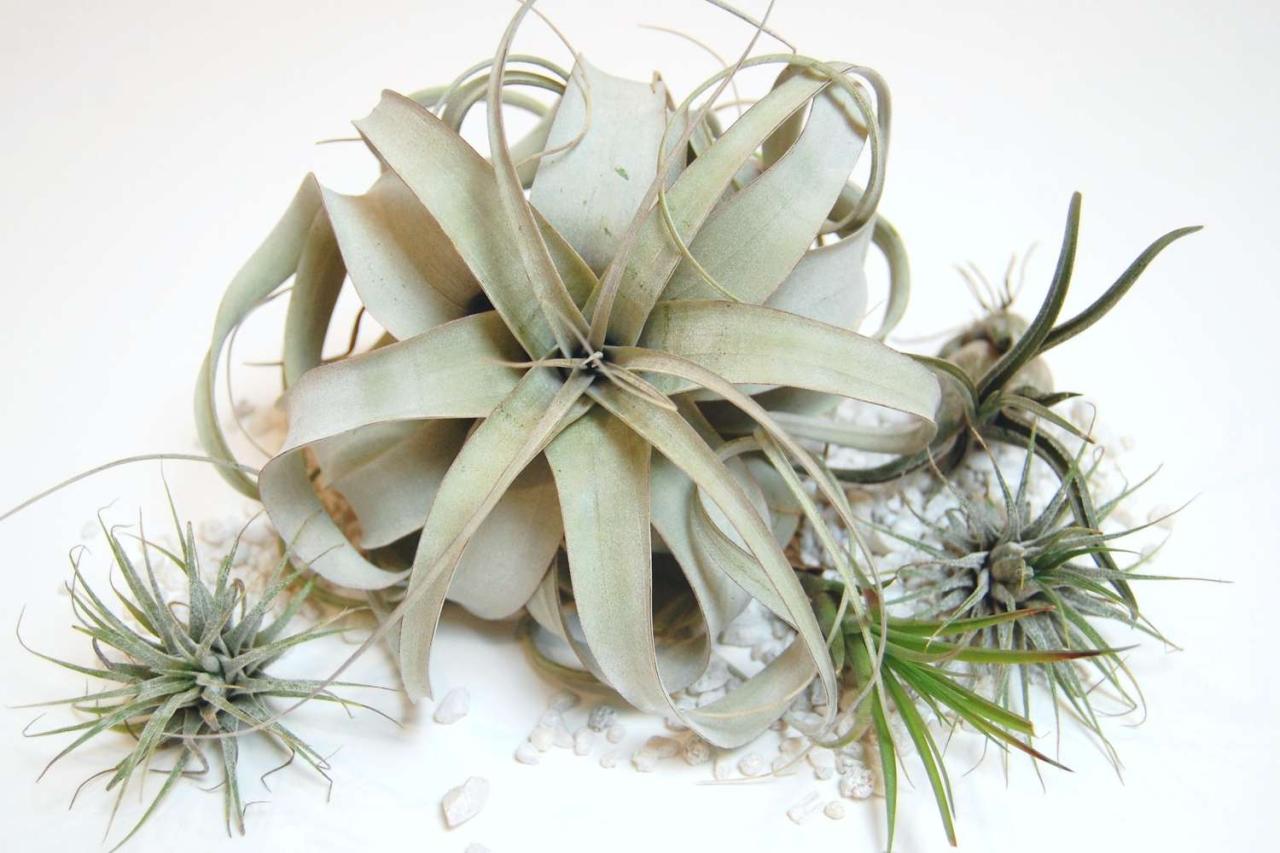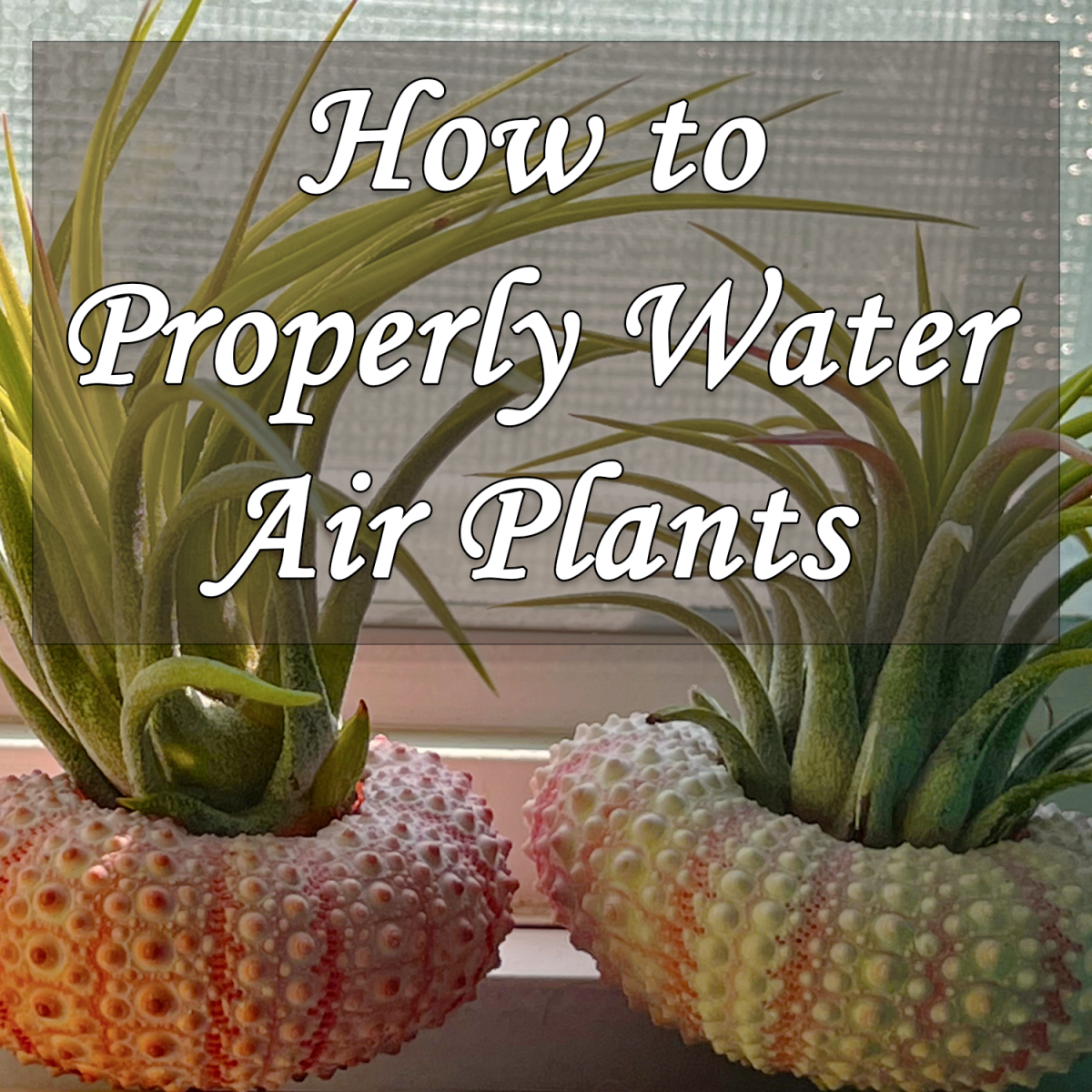How to Water Air Plants and Prevent Fungal Infections: These unique plants, unlike their terrestrial counterparts, draw moisture and nutrients from the air, making them a captivating addition to any home. However, proper care is essential to ensure their health and prevent fungal infections.
This guide will explore the intricacies of watering air plants, delve into the dangers of fungal growth, and provide practical tips for keeping your air plants thriving.
Understanding the anatomy of an air plant is crucial for proper care. They possess specialized structures called trichomes, which absorb moisture and nutrients from the air. Their natural habitat, often found in humid, tropical environments, provides insight into their ideal care requirements.
Proper watering techniques are essential for their well-being, and using rainwater or distilled water is recommended. Soaking, misting, and using a watering can are just a few methods that can be employed to ensure adequate hydration.
Understanding Air Plants
Air plants, also known as epiphytes, are fascinating botanical wonders that defy traditional plant conventions. Unlike their terrestrial counterparts, air plants do not require soil to thrive, instead absorbing water and nutrients directly from the air and their surroundings.
The Unique Characteristics of Air Plants
Air plants possess remarkable adaptations that allow them to flourish in unconventional environments. They are members of the Bromeliad family, a diverse group of plants that exhibit a wide range of forms and sizes. Their most striking characteristic is their ability to grow without roots anchored in soil.
Air plants have adapted to a life of aerial existence, relying on specialized structures to absorb essential resources from their environment.
Natural Habitats of Air Plants
Air plants are native to tropical and subtropical regions of the Americas, where they thrive in diverse ecosystems. They can be found growing on trees, rocks, and even telephone wires, showcasing their remarkable ability to adapt to various substrates. The natural habitats of air plants are characterized by high humidity, moderate temperatures, and access to rainwater and atmospheric moisture.
Anatomy of an Air Plant: Specialized Structures for Survival
Air plants possess a unique anatomy that facilitates their aerial lifestyle.
- Trichomes:These specialized structures, resembling tiny hairs, cover the surface of air plant leaves. Trichomes play a crucial role in water absorption, trapping moisture from the air and channeling it to the plant’s internal tissues. They also help to regulate the plant’s temperature, reflecting excess sunlight and preventing dehydration.
- Scales:Air plants also have overlapping scales on their leaves, which are responsible for absorbing water and nutrients from the environment. These scales are highly absorbent, allowing the plant to quickly absorb moisture from rain, dew, or even humid air.
- Tank-like Structures:Some species of air plants, such as the iconic Tillandsia ionantha, have developed tank-like structures at the base of their leaves. These structures collect rainwater and debris, creating a micro-ecosystem that supports the growth of beneficial bacteria and microorganisms. These bacteria play a role in breaking down organic matter, providing the plant with essential nutrients.
Watering Techniques

Providing air plants with the right amount of water is crucial for their health and growth. Understanding the importance of water quality, the ideal watering frequency, and various watering methods will ensure your air plants thrive.
Water Quality
Using rainwater or distilled water is highly recommended for air plants. Tap water often contains minerals and chemicals that can build up on the plant’s leaves and impede their ability to absorb moisture.
Rainwater is naturally soft and free of impurities, making it the best choice for watering air plants.
Distilled water is another excellent option, as it has been purified to remove all minerals and impurities.
Watering Frequency
The frequency of watering air plants depends on several factors, including the humidity and temperature of their environment.
Proper watering is crucial for air plants, as excess moisture can lead to fungal infections. To prevent this, soak your air plants in water for 15-20 minutes once a week, then thoroughly dry them before returning them to their display.
If you notice gnats, they are likely attracted to the damp soil in your air plant’s environment. To combat these pests, you can try Step-by-Step Instructions to Get Rid of Gnats in Plants and reduce the frequency of watering until the gnats are gone.
By following these tips, you can keep your air plants healthy and thriving.
In general, air plants should be watered once a week during warmer months and every two weeks during cooler months.
However, this is just a general guideline. It is important to observe your plants for signs of dehydration, such as wilting or dry leaves. If you notice these signs, increase the frequency of watering.
Watering Methods
Several methods can be used to water air plants. The most common methods include soaking, misting, and using a watering can.
Soaking
Soaking is the most effective way to water air plants. It allows the plants to fully absorb moisture through their leaves.
- Fill a bowl or sink with rainwater or distilled water.
- Submerge the air plants in the water for 15-30 minutes.
- Remove the plants from the water and allow them to drain completely.
Misting
Misting is a quick and easy way to water air plants, but it is not as effective as soaking.
- Use a spray bottle filled with rainwater or distilled water.
- Mist the air plants thoroughly, ensuring all surfaces are moistened.
- Mist the plants several times a week, especially during hot, dry weather.
Watering Can
A watering can can also be used to water air plants.
- Fill a watering can with rainwater or distilled water.
- Gently pour the water over the air plants, ensuring all surfaces are moistened.
- Avoid soaking the plants for too long, as this can lead to root rot.
Watering Frequency for Different Air Plant Species
The following table Artikels the recommended watering frequency for different air plant species:
Species |
Watering Frequency |
|---|---|
Tillandsia ionantha (Pink Quill) |
Once a week |
Tillandsia aeranthos (Sky Plant) |
Every two weeks |
Tillandsia xerographica (Xerographica) |
Once a month |
Tillandsia cyanea (Pink Quill) |
Every two weeks |
Tillandsia usneoides (Spanish Moss) |
Once a month |
Preventing Fungal Infections: How To Water Air Plants And Prevent Fungal Infections
Fungal infections can be a significant threat to the health of your air plants, potentially leading to discoloration, wilting, and even death. Understanding the causes and implementing preventative measures is crucial for keeping your air plants thriving.
Proper watering is crucial for air plants, as too much moisture can lead to fungal infections. To ensure optimal conditions, consider the location where you’ll hang your air plant, as humidity and airflow play a significant role in their health.
For a comprehensive guide on selecting the perfect spot for your hanging plants, check out How to Select the Right Spot for Your Hanging Plants. By choosing a well-ventilated location, you can minimize the risk of fungal growth and create a thriving environment for your air plant.
Common Fungal Infections and Symptoms
Fungal infections in air plants are typically caused by various fungal species that thrive in moist environments. These infections can manifest in different ways, depending on the specific fungus involved. Here are some common fungal infections and their associated symptoms:
- Root Rot:This infection affects the roots of air plants, causing them to become soft, mushy, and discolored. The plant may also exhibit stunted growth and wilting. The presence of a slimy residue around the base of the plant is a strong indicator of root rot.
- Leaf Spot:This fungal infection causes dark, circular spots to appear on the leaves of air plants. These spots may be raised or sunken, and they can eventually coalesce to form larger lesions.
- Powdery Mildew:Powdery mildew is characterized by a white, powdery coating on the leaves of air plants. This coating can interfere with photosynthesis, leading to weakened growth and discoloration.
- Rust:Rust is another fungal infection that causes reddish-brown spots or pustules on the leaves of air plants. These spots may be accompanied by yellowing or browning of the surrounding tissue.
Environmental Factors Contributing to Fungal Growth, How to Water Air Plants and Prevent Fungal Infections
Fungal infections in air plants are often triggered by specific environmental factors that create favorable conditions for fungal growth. Two primary factors are:
- Excessive Moisture:Air plants are epiphytes, meaning they grow on other plants without parasitizing them. They absorb moisture from the air and do not require soil. Excessive watering or prolonged exposure to wet conditions can create an environment conducive to fungal growth.
- Poor Air Circulation:Stagnant air can trap moisture, creating a humid environment that encourages fungal development. This is especially problematic in enclosed spaces or when air plants are clustered too closely together.
Preventing Fungal Infections
Preventing fungal infections in air plants is paramount to their well-being. By implementing these preventative measures, you can significantly reduce the risk of fungal infestations:
- Ensure Proper Drainage:If you use a decorative container to hold your air plants, make sure it has drainage holes to allow excess water to escape. This prevents the plants from sitting in stagnant water, which can promote fungal growth.
- Maintain Appropriate Humidity Levels:Air plants thrive in moderate humidity levels. Avoid exposing them to excessive humidity, as this can create a favorable environment for fungal growth.
- Provide Adequate Air Circulation:Ensure good air circulation around your air plants by spacing them appropriately and avoiding overcrowding. Consider using a fan to promote air movement, especially in humid environments.
- Use Clean Water:Use clean, filtered water for watering your air plants. Avoid using tap water that contains chlorine or other chemicals, as these can stress the plants and make them more susceptible to fungal infections.
- Inspect Regularly:Regularly inspect your air plants for signs of fungal infections. Early detection is key to successful treatment.
Closing Notes

By understanding the nuances of air plant care, you can cultivate a thriving collection of these unique and fascinating plants. From choosing healthy specimens to providing appropriate light and moisture, the key to success lies in mimicking their natural environment.
By following these guidelines, you can prevent fungal infections, ensure optimal growth, and enjoy the beauty of air plants for years to come.
Questions and Answers
What are the signs of a fungal infection in an air plant?
Fungal infections can manifest as black or brown spots, mold growth, or a slimy texture on the leaves. The plant may also appear wilted or discolored.
How often should I fertilize my air plants?
Fertilizing is generally recommended once a month during the growing season. Use a diluted, balanced fertilizer specifically formulated for air plants.
Can I use tap water to water my air plants?
While tap water is technically usable, it’s best to avoid it due to the presence of minerals and chlorine, which can harm the plants. Rainwater or distilled water is the preferred choice.
